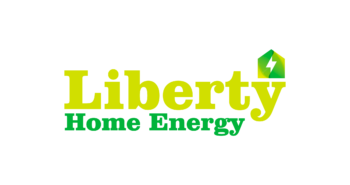Los Angeles is a city of cinematic facades and layered histories, where Craftsman bungalows, Spanish Revival villas, and Mid-Century gems share blocks with contemporary builds. Preserving these heritage homes doesn’t mean freezing them in time; it means evolving their performance—quietly—so they remain comfortable, efficient, and resilient. Here are ten sustainable systems and strategies that slip behind walls, under floors, and inside attics to modernize without compromising character.
1) High-Performance Building Envelopes (Without Foam Overkill)
Sensitive upgrades start with the envelope. Dense-pack cellulose in wall cavities, wood-fiber or mineral wool boards behind stucco repairs, and continuous air-sealing at penetrations dramatically reduce uncontrolled airflow. Unlike aggressive exterior foam wraps, these vapor-open materials let historic assemblies dry, preventing trapped moisture while dialing down heating and cooling loads.
2) Heat-Pump HVAC that Disappears
Variable-refrigerant-flow (VRF) and ducted mini-splits deliver zoned comfort with remarkable efficiency. Slim air handlers hide in soffits, under eaves, or within existing chases, sparing original ceilings and moldings. Paired with smart thermostats and occupancy sensors, they reduce runtime—and sound—so the home feels serene, not mechanical.
3) Heat-Pump Water Heaters with Heat-Recovery
Modern heat-pump water heaters (HPWHs) use a fraction of the energy of gas tanks. In LA’s mild climate, placing an HPWH in a garage or basement offers a bonus: gentle dehumidification. Add drain-water heat recovery on shower stacks, and you reclaim warmth that used to wash down the pipe—cutting energy use further with no change to historic finishes.
4) Electrification with Panel Right-Sizing
Electrification doesn’t always require a massive service upgrade. Load calculations, circuit sharing via smart panels, and 240V-ready conduits let owners phase in induction cooking, heat pumps, and EV charging. Electric systems eliminate combustion inside the home, improving indoor air quality and future-proofing against changing gas codes—while the visible kitchen and hearth remain visually authentic.
5) Induction and Ventilation as a Healthy Pair
Induction cooktops offer instant control without combustion byproducts. Coupled with a quiet, properly ducted range hood or in-line fan, they reduce particulates and moisture. Because induction releases little waste heat, kitchens stay cooler—particularly valuable under low, original ceilings where adding mechanical clutter would mar the room’s lines.
6) Solar You Don’t See (Much)
Heritage districts often allow solar when it’s not visible from the primary street. Invisibly mounted PV on rear slopes, integrated solar shingles, or ground-mounted arrays behind landscape screens let owners generate clean power discreetly. Microinverters or optimizers per panel mitigate partial shading from mature trees—maintaining production without forcing aggressive pruning.
7) Battery Storage for Grid-Wise Quiet
Home batteries smooth the peaks and troughs of California’s time-of-use rates and keep essentials running during outages. Tucked into garages or utility rooms, they pair with rooftop solar—or simply act as load shifters for grid power. The result: quieter nights (no generator), reduced demand charges, and a home that’s both polite to the grid and resilient.
8) Water Stewardship Hidden in Plain Sight
Sub-metering for irrigation and greywater reuse systems can cut outdoor consumption dramatically. Rainwater from tile or shingle roofs feeds underground cisterns; smart controllers respond to weather forecasts to avoid overwatering. Inside, WaterSense fixtures maintain period aesthetics with adapted trim while reducing flow. None of this competes with the home’s architectural expression.
9) Daylight, Shading, and Heritage Glazing Upgrades
Original windows can be sustainably tuned. Weatherstripping restores airtightness; interior low-profile storm panels add insulation and acoustics without altering exterior sightlines. Outside, discreet awnings, pergolas, and deep eaves provide passive cooling that complements LA’s sun path—preserving the window’s crafted muntins and wavy glass while cutting solar gain.
10) Smart Controls that Respect Ritual
A sustainable home is one that’s easy to operate. Scene-based lighting dimmers, occupancy sensors in infrequently used rooms, and learning thermostats reduce consumption without fuss. Home energy monitors give owners a live view of usage, helping them refine behavior. Importantly, switches and cover plates can be selected to match period hardware, honoring the tactile rituals that define older homes.
Integrating Sustainability with Preservation
The quiet theme across all ten systems is compatibility: materials and equipment must complement historic assemblies, not fight them. Vapor-open insulation keeps walls healthy. Electrification reduces mechanical complexity and indoor pollutants. Solar and storage align with grid realities while protecting street-facing facades. Thoughtful controls translate technical efficiency into daily ease.
A successful upgrade begins with a holistic assessment—blower-door testing, infrared scans, and load calculations—followed by a sequenced plan: envelope first, then right-sized electrification, then onsite generation and storage. This order ensures every new kilowatt-hour goes further and avoids oversizing equipment that would cost more and cycle inefficiently.
For design teams, close coordination between preservation specialists, MEP engineers, and contractors is essential. Runs for refrigerant lines can share discreet pathways with historical chases; attic work must protect lath-and-plaster ceilings below. For owners, the payoff is a home that feels cleaner, quieter, and more comfortable—without sacrificing the charm that made it worth preserving.
Los Angeles thrives on reinvention. Heritage homes that embrace invisible sustainability extend that tradition: they honor craftsmanship while adopting technologies that make neighborhoods more resilient and climate-wise. In doing so, they reinforce the broader narrative of LA residential architectural works—a living archive where history and high performance coexist, quietly shaping a more sustainable city.
Related posts
Categories
Recent Posts
Advertisment

